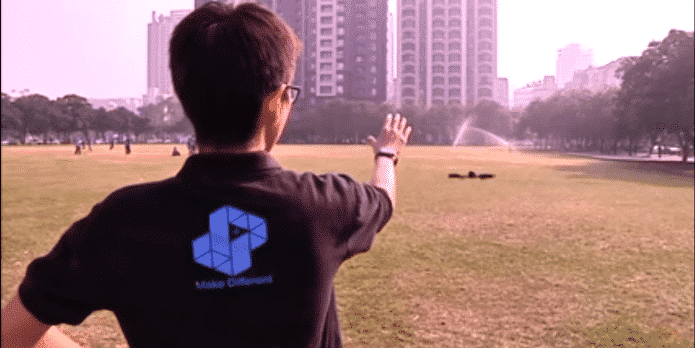Researchers Use Apple Watch And Hand Gestures To Fly Drone
Taiwanese technology researchers at PVD+ have written an algorithm for the Apple Watch that renders it a remote controller that can pilot drones and manipulate lights using hand gestures. This could mean a realistic future for The Force not on the “Star Wars” movie screen, but in the palm of your hand.
A group of five researchers comprising of Mark Ven, a civil engineering PHD student at the National Chung Hsing University as well as Yang Ming-der, a professor there, plus another three team members have been working at PVD+ since 2013, developing software they call Dong coding to read hand gestures, notes a report by Reuters.
After 18 months of research and application, the PVD+ team now say they can install the algorithm on any device and give it the ability to control directions. Thanks to the device’s gyroscope and accelerometers.
During a demonstration outside the Park Lane Department Store on Gongyi Road in Taichung City, the researchers were able to control a Parrot AR Drone 3.0 by the waving of a hand that was wearing an Apple Watch. The smartwatch was interpreting what he was doing and sending corresponding signals that the drone could interpret and then react accordingly.
“Previously we’ve needed complicated controls to fly drones, but now we can use a wearable device, and through human behavior and gestures directly interact with them – using a hand to control and fly drones directly,” he told Reuters.
“We can also control a ball, like that in Star Wars’ BB-8 droid, using a wearable device as well,” he said, referring to his Sphere 2.0 drone that resembles the BB-8 droid from the latest Star Wars movie, The Force Awakens, directed by JJ Abrams and starring Daisy Ridley and Harrison Ford.
“We used to play with drones using controllers, but now we could control them with our hands. It’s something I’d love to buy after seeing it here,” said Wang Si-kai, a student from Hsiuping University of Science and Technology watching the demonstration.
Since, the technology is still in its early days, it is easily affected by wind and other environmental factors, while batteries can be exhausted in as little as 20 minutes.
“The drone’s performance was great, although the environment provided a bit of a challenge – the airflow made it harder to control. I think we could consider it good if we exclude the environmental factors,” said another Hsiuping University student, Wu Jia-hsin.
In addition to flying and driving drones, the team also created an app that controls light levels and colors via hand movements.
“When I clap twice the light turns on, as it detects that I’m clapping. When I write an English “R” in the air the red light turns on, and when I write an English “Y” the yellow light turns on. Lastly, when I clap twice the light turns off.”
“During this process we are communicating and interacting on the Human Computer Interface by using the internet of things, and the wearable device,” he added.
The PVD+ team is currently in the process of applying to Taiwan’s Li & Cai Intellectual Property Office for a patent that would cover its Dong software.
https://www.youtube.com/watch?v=uCUSS06_xS8&feature=youtu.be

